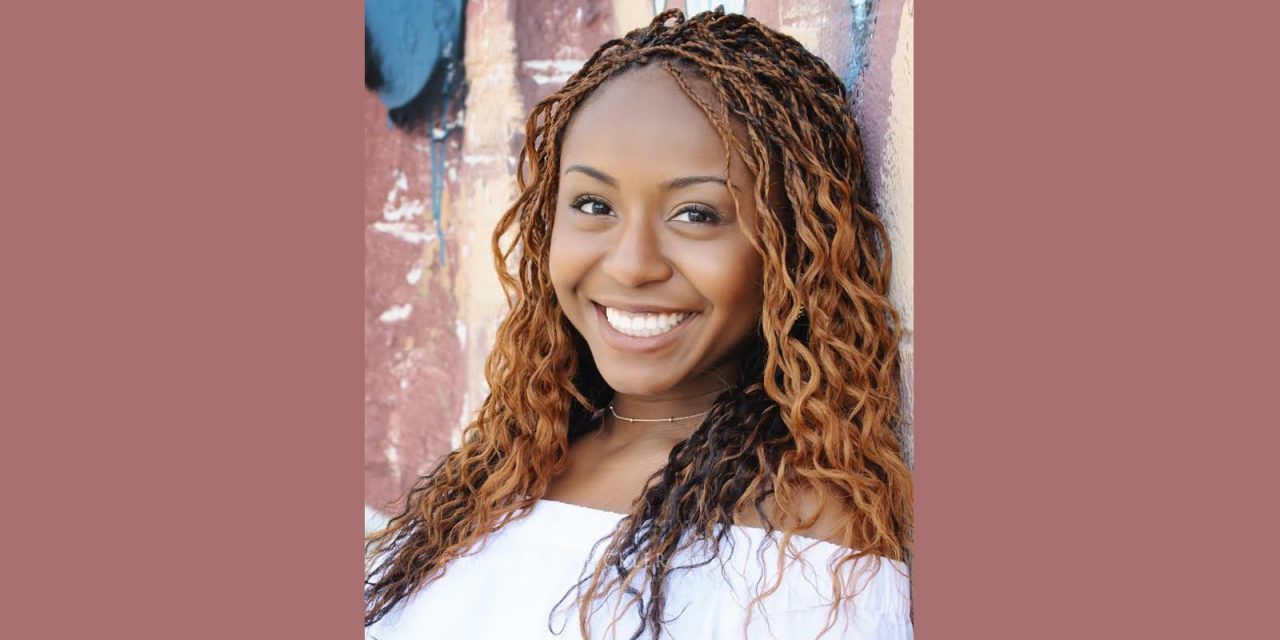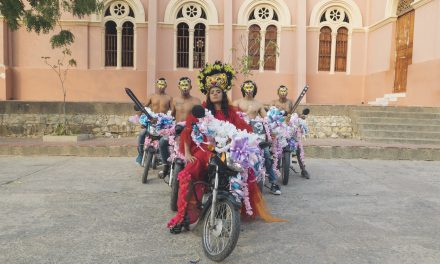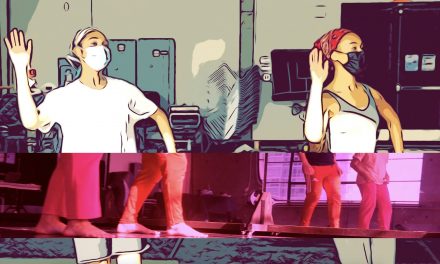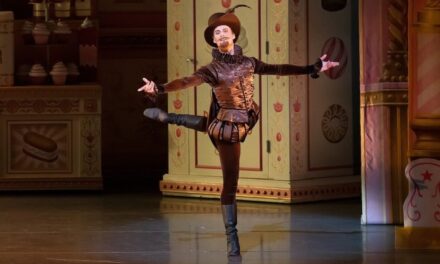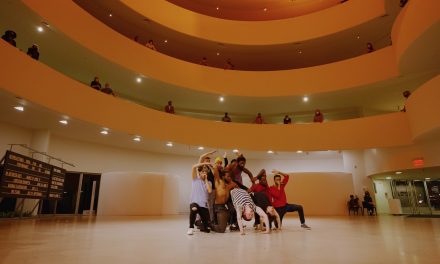OKLAHOMA!, at Los Angeles’ Ahmanson Theatre, running from September 13 to October 16, is a controversial show, but there is no controversy about the energy, elan and love for dance of the 21 year old Jordan Wynn, a graduate of Tisch School of the Arts at NYU, the Dance Captain and now Lead dancer of OKLAHOMA!’s touring company. This young woman, has earned her wings, taking over dance responsibilities for the large diverse cast of principals and understudies along with performing in an extensive solo Dream Ballet in the Second Act.
I was curious to find out more about her background, her responsibilities and experience with the show, and her plans for the future. My interview with Ms. Wynn on September 23, 2022 started with her beginnings in dance which was the spring board to her many accomplishments.
JD: How did you start dancing and where was your training?
JW: I started dancing heavily when I was six. I auditioned for The Nutrcracker. I did tap, ballet gymnastics, and a bunch of things at Draper Center for Dance Education in Rochester, New York where I’m from. That was where I auditioned for The Nutcracker. After that, they gave me a scholarship to start going to the school year-round and I went there for the rest of my pre-college career. I was primarily trained in classical ballet; they were primarily a ballet studio, so I only had modern and jazz once a week.
In high school, I took the opportunity to go to various dance programs. One summer I trained at Alvin Ailey, another summer at Juilliard. Then for undergrad I went to Tisch School for the Arts at The New York University. I did their three-year program and trained under amazing professors and teachers that really fostered me to expand the way I thought about dance and the way I dance. It was a great three years and I graduated in 2021.
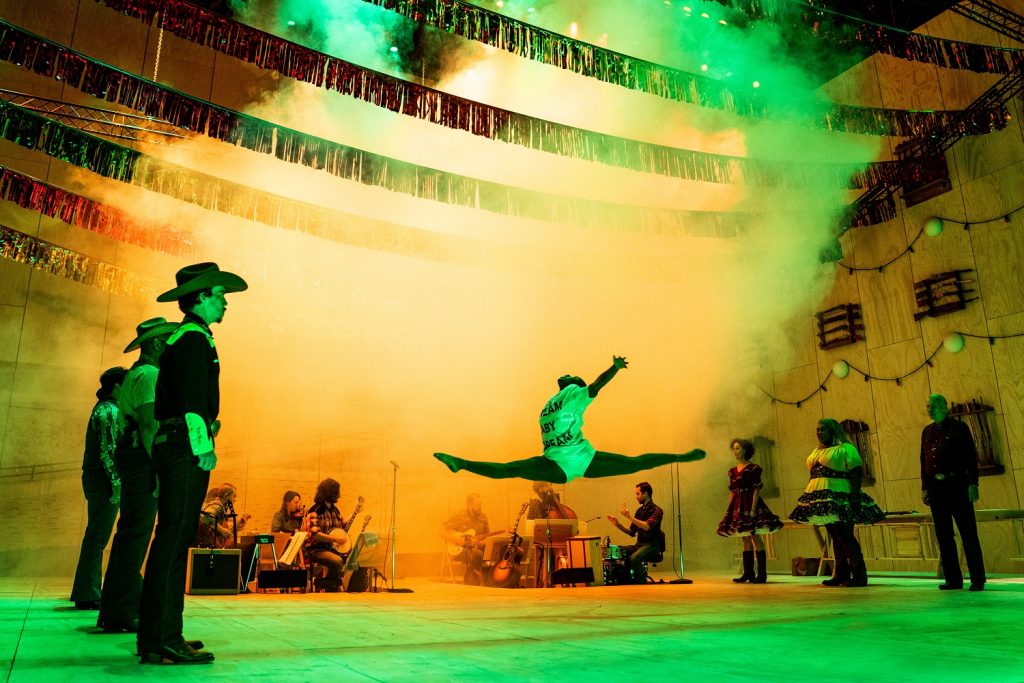
Gabrielle Hamilton and the company of the national tour of “OKLAHOMA!” – Photo by Matthew Murphy and Evan Zimmerman for MurphyMade
JD: Right in the middle of the Pandemic?
JW: Right! Right in the middle of the pandemic. Oh, but it was when things were starting to open up. Right out of college I had a full-time desk job. I was actually working at NYU in their undergraduate Admissions Department, and only auditioned for five things, just because there wasn’t many things going on. Oklahoma! was one of them. On July 2021 I auditioned, and at the end of September I heard back that they wanted me to come on tour with them.
JD: Were you hired originally as a dancer, a dance captain or soloist for the dream ballet?
JW: I had already done the Off-Broadway version in my freshman year of college at NYU. John Heginbotham, the choreographer, came to New York University and was workshopping some ideas. The Dream Ballet was going to be a solo primarily already.
The idea at that time was to have more of an ensemble of dancers. [That was] back in 2018, I was a part of that ensemble. But at the end, like in the Broadway version, it ended up being a solo. The dancers came out only at the end for a few seconds. I was a part of that group.
That was how I was initially introduced to John. Fast forward to 2021 after graduating, it was so cool to audition for him, I hadn’t seen John in years. The possibility of working with him again was wonderful.
JD: And the audition process?
JW: It was a pretty regular audition process. I had just been recommended to audition from the Chair of the Dance Department at Tisch. I endlessly thank him because I wouldn’t be here without that opportunity.
There were, typical auditions, and cuts. But John does this thing that I really appreciate where he took us all in one by one and wanted to see how we did the solo parts individually. He gave us feedback and corrections, and made us do it again, which was really nice. Then we would learn a couple more things, and then it was over. I thought, Ahhh we’ll see. A few weeks later, I found out that I had booked it, which was really cool.
In terms of what I was originally auditioning for, I started out as the alternate dancer. That was Just to make sure that I could do the work. Also I knew that in that contract I was going to be doing Assistant Stage Management and being the Dance Captain as well.
At first that was nerve wracking because this was my first entrance into theater.
[Both Laugh]
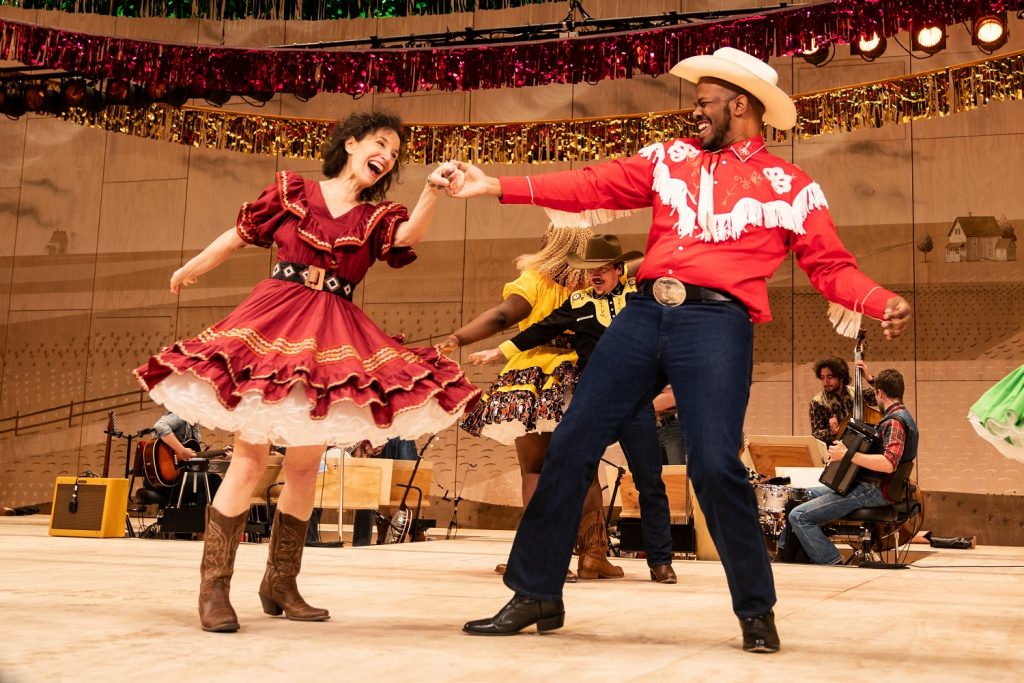
L-R Barbara Walsh and Patrick Clanton in the national tour of “OKLAHOMA!” – Photo by Matthew Murphy and Evan Zimmerman for MurphyMade
JD: After all that you can become President!!! [they laugh]
JW: Yeah, it felt at first like it was a large undertaking, but getting guidance from John, and from other cast members… I was just a newly graduated adult, just twenty years old, trying to maneuver my way through and being a dance captain was something I wasn’t used to. I was Rehearsal Director but that’s much different than being a Dance Captain. And I was honestly picking up skills along the way.
JD: What a huge learning curve. They must have seen potential in you. As the Dance Captain on this tour what exactly are your responsibilities?
JW: Well, every time we have a rehearsal I collaborate with the Stage Manager to figure out a way, especially with the dancing in the show, what pieces we need to look at further, then run a rehearsal to clean those areas. I also run dance rehearsals for understudies who need to learn the show. Also I’ll give a corrections when something looks off in the choreography. I keep the dancing in check. I sometimes swap out of the show to watch the show.
The most dancing really is in the second act, the Dream Ballet. Now that I’m the [Dream Ballet] dancer I have to keep myself in check. But with the other dancing … mostly it’s individual corrections, so I’ll just text or email the notes to each person.
JD: How often can you go out front to see the show? And do you have someone to understudy you in the Dream Ballet when you do?
JW: So now that I am the dancer in the Dream Ballet…Gabriel Hamilton, was the original and was injured, and since I’m the alternate I was doing six shows, and the second cover was doing two. So that was how we originally started coverage for her in that role and began doing the eight shows a week fully so it was harder for me to watch in the audience. It happened when we were in Nashville, which I think was in May. I would typically be asked to watch, and they would treat it as a swing out. And when the other alternate, Minga, came in I would rehearse her, and I watched her the first time she went on. It really depends on the situation.
JD: That’s a full schedule…a tough job. Is the full show Equity? I didn’t notice the Equity logo.
JW: Yes, this is an equity show.
JD: In New York. the original show was in the round. Was it difficult to adjust to the proscenium for the cast in the show, and for you as a Dance Captain?
JW: So since I wasn’t in the New York show. I never really got to experience fully what it was like being in the round. Being in the second version and seeing some rehearsals. I can understand the idea of what it was like. At least the feedback that I’ve heard about being in a proscenium, it feels a little bit further away from the audience. Which in some ways it’s hard because it’s less confrontational in that way, but I only experienced performing in the proscenium.
J
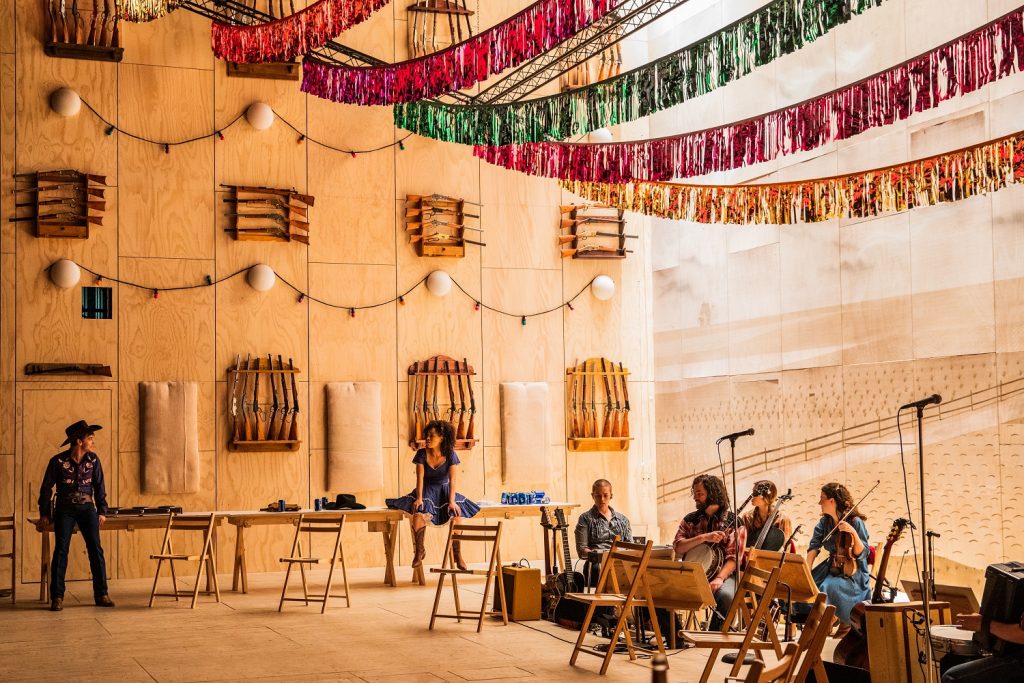
L-R Sean Grandillo, Sasha Hutchings and the company of the national tour of “OKLAHOMA!” – Photo by Matthew Murphy and Evan Zimmerman for MurphyMade
D: Got it! And you heard that it’s less confrontational from some of the cast members who were in the original?
JW: Yes, it’s just a little bit more removed. Not necessarily negative, but it is just different.
JD: Right? Was the dream choreography developed in New York, then passed down to you?
JW: Yes, the original was also on the tour as well. Some sections had been changed a little bit just literally because of the physical space that we’re working with. The moves are pretty similar to the choreography that was done in New York.
JD: Do you know how John started developing the new choreography? Was it improvisation, and then development of the new version? Because obviously the original DeMille version was very, very different.
JW: Yeah, I don’t know as much about his actual process of creating the dance.
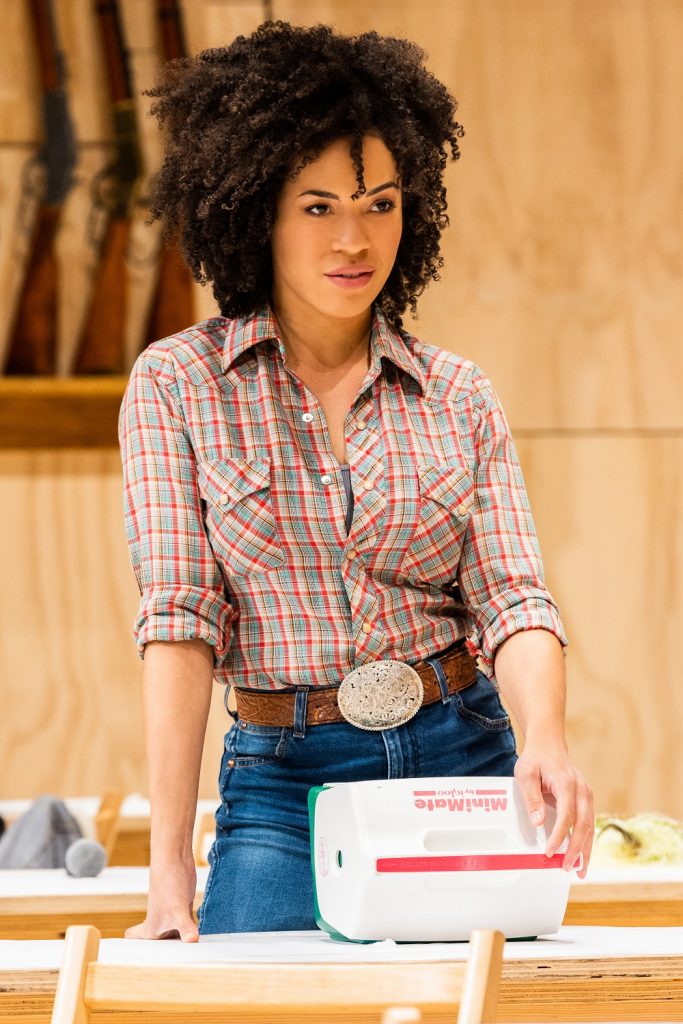
Sasha Hutchings in the national tour of “OKLAHOMA!” – Photo by Matthew Murphy and Evan Zimmerman for MurphyMade
JD: Having worked with Richard Rodgers, and seeing original rehearsals with Agnes and Gemze, I’m a bit of a purist. So I’d like to know if John decided to go to the historical part, and abstract it from there; or was his thinking to do a total abstraction from the very beginning?
JW: Yeah, I honestly am not sure. I think John is really fond of Agnes DeMille’s work, and the fact that she really fought to have dance as the “advancer“of the plotline, but in this show, it’s a completely different way of telling this story. The dance advances the plot line, both physically and emotionally and Laurey is changed after what happens in the dream ballet.
JD: Also I noticed that they changed the music during the dream ballet. It became almost cacophonous. Do you have any idea about that at all?
JW: I’m sorry. No, I don’t.
JD: As you said, most of the dancing is in the second act. Could you tell me about working with Sasha Hutchings (Laurey) and Barbara Walsh (Auntie Eller) who appear to have lots of dance training. However, how was it working with a cast with less training in dance?
JW: It was definitely different than working with dancers. As a dancer. I don’t think about dialogue and the scene as much initially. I’ve learned so much from the actors. I’ve learned more about intention in dancing when it comes to being in a show such as this. They’re great, they’ve picked up very quickly. They’re easy to work with. I think everybody in the cast has had some sort of dance training, whether it be from the musical theater programs they were in, or some of the shows they were in. So it was very simple to work with them. They’re really great.
JD: Now, the show has received mixed reviews do you have any wisdom since you are in the show?
JW: I mean, I enjoy the show. I like being in the show. I think the show is different. I think it’s daring. Even though it’s different than being in the round [where the audience is closer], it still is very confrontational to a lot of people who are not used to tradition being broken, and I think tradition being broken is a threat to some. Doing this is pushing the envelope and is what needs to be done more and more in theater.
Just the people that we have on stage… that alone messes with people. People can sit and check out why they don’t like some of the choices that are made. Really sit with that. The original show was the dialogue we are working with…all the same, but a lot of it is played as a joke, for just a laugh. But digging deep into the actual text of what really is being said, and what really exists on the pages is something people aren’t used to and should be explored more in theater. I think we all think we’re doing something really cool, and hope that people can also see things the same way.
JD: Yes, you’re right it does shake you as an audience, also, as a dancer and a choreographer. So I’m looking at it and I’m basically living in the tradition of that. This really takes me from A to Z watching it and understanding it. That’s why it’s so good to hear from you as a performer on the inside to be able to understand exactly how you’re feeling about it. L.A. is not your first city, right?
JW: Oh, no, We’ve been out for nearly a year…this is the second to the last city.
JD: What is the reaction in the other cities. Have you noticed that there’s a difference in the reaction from one city to the other?
JW: I think most of the larger metropolitan cities that we’ve been to have received it better than the small towns, small cities, and rural areas. Yeah, I think that is pretty much how it is. I think some of our best audiences have been here. Some of our best cities were also in Dallas, the Washington’s Kennedy Center. At least I personally feel they received it with open arms, open minds and open hearts.
JD: Ah…yes. If you are in a city that you can feel the tension as an actor, as a dancer, as a performer, how do you receive that, or work around it?
JW: I think because I’m proud of the work that I’m doing, and I know that I’m doing what I’m supposed to do in terms of the story that we’re telling. I think the criticism honestly doesn’t bother me. I know that, like I’m doing the work that I came to do, and telling the story that I want to tell, and am an instrumental part of the show in a way that advances the story that we’re trying to tell, and I think at the end of the day criticism from outward sources, whether good or bad… if it’s good, great, if it’s bad, like, okay, regardless. I’m still getting to dance on stage every night. And I think that really, at the end of the day, is what I look forward to most.
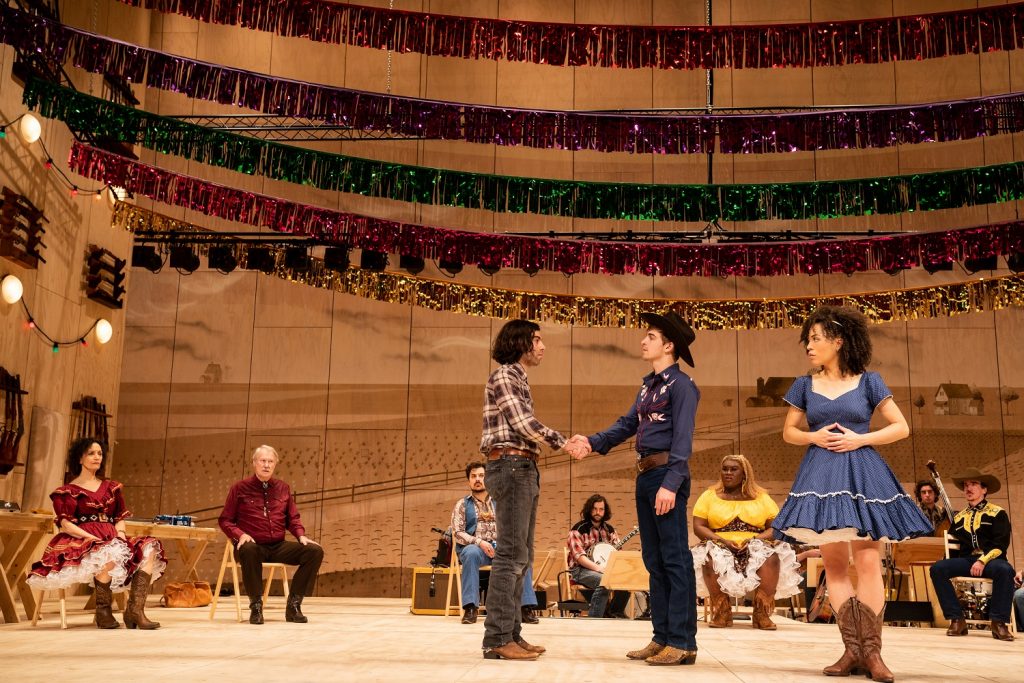
L-R Christopher Bannow, Sean Grandillo, Sasha Hutchings and the company of the national tour of “OKLAHOMA!” – Photo by Matthew Murphy and Evan Zimmerman for MurphyMade
JD: So wonderful! What you’re saying is perfect. It shows intelligence in what you have to do when you go out on stage. In some cases in the theatre, it’s not even something that you know a good percentage of the audience wants to see. But that’s what theater is about, it can be radical. So I can really appreciate what you’re saying.
JW: I think I mean just that, if people come to see it, I hope they are touched by the dancing, I think it really is special. The dream ballet, in particular that I dance is a special part of the show that may leave some people with a lot of questions, but also, I think, simultaneously elucidates and explains a lot. I hope that all that I’ve been saying, can aid in that at the end of the day I, Jordan Wynn, I would like to be a storyteller on that stage, and really do enjoy telling such a story as this.
JD: Well. You’ve been very articulate, and it has been lovely to talk to you, and I wish you all the best. The tour is ending here in L.A..
JW: We have one more city, Tempe, Arizona.
JD: Great! One last question; What do you plan to do with your future?
JW: I just want to touch every vehicle of dance that I can. In the past I went to Jacob’s Pillow with the John Heginbotham’s Dance Company. So I’ve been working with him. I’ve also worked with a couple of other dance companies. I want to start doing more, but I’ve already done like concerts and music videos. So I just want to spread my wings, and also do more theater. I love dance heavy shows so I want to try to see what else is out there for me. I really want to be as multi-faceted as I can. Just do everything that I can in the dance world because I just love dancing.
JD: So you have your whole life in front of you…that’s wonderful. Thank you so much for sharing your insights with us. This was really lovely. I’m so glad we got to talk.
JW: Thank you.
For more information and to purchase tickets to Oklahoma!, please visit the Ahmanson Theatre website.
Written by Joanne DiVito for LA Dance Chronicle.
Featured image: Jordan Wynn – Photo courtesy of the artist.

